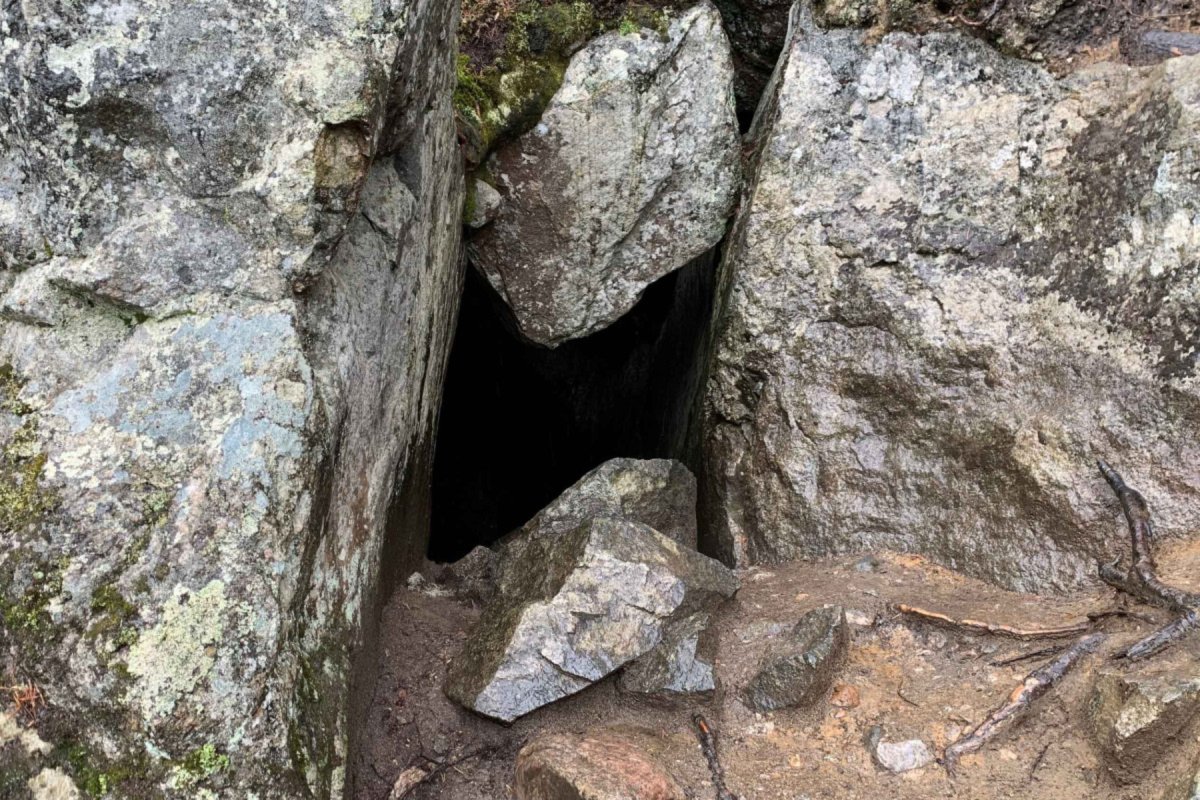The magical acoustic secrets of a famous cave known as the "Devil's Church" have been revealed by researchers.
The Devil's Cave, also known Pirunkirkko, is situated in the Koli mountain range in eastern Finland. It has been used for centuries as a gathering place for local sages to contact the spirit world using sound.
The 112-foot-long cave was used by the shamans for drumming sessions and sound-based rituals. The cave's sacred use may be due to its strange acoustic properties, which have now been investigated by scientists, according to a new paper in the journal Open Archaeology.

"Such a distinctive resonance is perhaps one of the reasons why Pirunkirkko has become important to the historical sages and contemporary practitioners. In such acoustics, people do not perform their rituals alone, but in interaction and cooperation with the physical space and natural environment," Riitta Rainio, a researcher of archaeology at the University of Helsinki, told Newsweek.
"The resonance provides a means of connection and transaction with some kind of more-than-human participant or agent, signaling their presence and existence."
The researchers took acoustic measurements in the cave, finding that it had a strong resonance phenomenon. This was because of a standing wave of sound bouncing between the two parallel walls, generating a ringing tone of sound at frequencies of between 219 hertz and 232 hertz. This essentially means that any noises generated in these frequencies are amplified and lengthened inside the cave.
"A standing wave is a physics phenomenon in which oppositely-moving sound waves combine to form a wave with a larger amplitude. In the case of Pirunkirkko, such a wave is created because the sound bounces between the unusually smooth and parallel walls of the corridor-like cave," Rainio said.
"The frequency of this standing wave is determined by the distance between the walls. Standing waves are common in the built environment, but not so much in the natural environment, where smooth and solid, parallel surfaces are rarely found."
"This tone stays audible after loud instantaneous broadband noises, such as balloon pops, hand claps, and drumbeats," the authors wrote in the paper.
"Alternatively, the ringing tone can be excited by singing at the same frequency or one of its integer multiples. This resonance phenomenon must have been present in the historical rituals performed in the cave, because the ethnographic record shows that they were full of loud impulse-like noises."
The sages are thought to have hit the rocks with objects, shouted, shot guns, sang, and jumped around inside the cave, which would have generated the resonance tone.
"The cave responds to one of the three sung tones – the one matching the resonant frequency – by amplifying it throughout the singing," the authors wrote.

One of the most famous of the sages, who used the cave for witchcraft and other magical rituals, was a man called Kinolainen.
"According to local tradition, sages entered this cave leading into the mountain to connect with the spirits that lived within the mountain. Spirits were asked for advice on various problems, especially on finding out the causes of diseases and curing them," Rainio said.
"Archival sources say, for example, that sage Kinolainen who is said to have used this cave went to "the church," encountered the spirits there and conversed and argued with them. From other sources we know that these kind of ritual encounters usually included loud yelling, stomping and shooting."
The researchers think that the cave's use in rituals came from its bizarre acoustic properties, shaping beliefs and experiences involved with the cave.
"Such a distinctive resonance is perhaps one of the reasons why Pirunkirkko has become important to the historical sages and contemporary practitioners as well as all those who have used the place over time," the authors wrote. "The study of acoustics gives new tools for examining and understanding the religious beliefs and experiences reported in Pirunkirkko and similar places. In addition, the study illustrates how cultural frameworks of thought guide our sensory perceptions leading to different experiences and interpretations."
The cave is still in use today by people practicing contemporary shamanism.
"Practitioners will go into the cave and do drumming rituals inside. This is done with the knowledge of the history of the cave, yet not necessarily with the conscious awareness about the sonic qualities of the cave," Elina Hytönen-Ng, a researcher and paper co-author at the University of Eastern Finland, told Newsweek.
"How frequent is the use is difficult to say, as during the summer season the cave is often visited by tourists and it is not a very peaceful place then. During the winter there are not that many visitors, but the wintry conditions might also obstruct one to enter the cave."
Update 11/30/23, 11:57 a.m. ET: This article was updated to include comments from Elina Hytönen-Ng and Riitta Rainio.
Do you have a tip on a science story that Newsweek should be covering? Do you have a question about acoustic resonance? Let us know via science@newsweek.com.
Uncommon Knowledge
Newsweek is committed to challenging conventional wisdom and finding connections in the search for common ground.
Newsweek is committed to challenging conventional wisdom and finding connections in the search for common ground.
About the writer
Jess Thomson is a Newsweek Science Reporter based in London UK. Her focus is reporting on science, technology and healthcare. ... Read more
To read how Newsweek uses AI as a newsroom tool, Click here.








